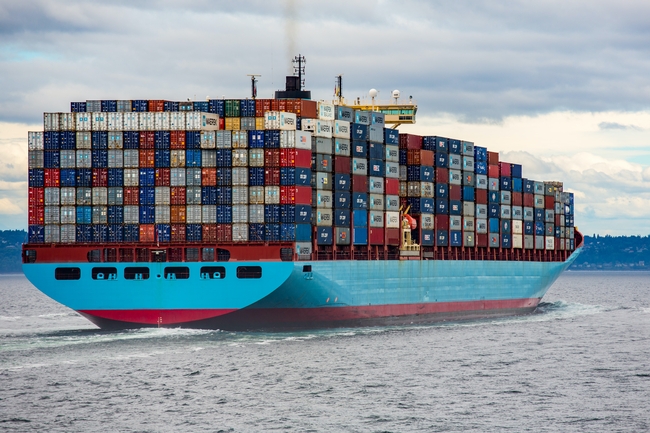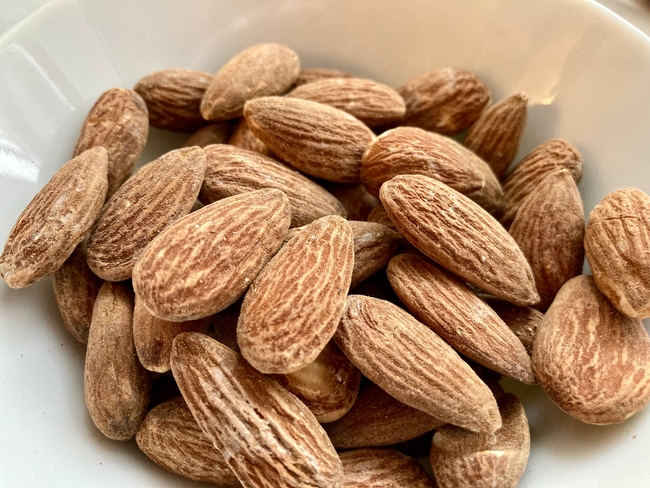Posts Tagged: Colin Carter
Global food security threatened by grain export disruptions
Wheat and corn prices have spiked after Russian aggression in the Black Sea
The Russian invasion of Ukraine in early 2022 caused wheat and corn prices to spike 30% and 13%, respectively, and threatened a worldwide food crisis. International efforts to mitigate a food security crisis via the Solidarity Lanes and the Black Sea Grain Initiative (BSGI) have successfully allowed grain exports out of Ukraine. However, Russia's recent withdrawal from the BSGI, coupled with increased bombings of Odesa and Danube River ports, caused another price spike for these grains. Further aggression in the region risks halting Russian wheat and Ukrainian corn exports across the Black Sea, the main export channel for both countries.
Russia accounts for about 18% of global wheat exports and 2% of worldwide corn exports, while Ukraine provides 15% of global corn exports and only 9% of wheat. Why have these statistics spooked the grain commodity markets?
“The simple answer is that Russia's aggression in the Black Sea region increases the risk of the world grain market losing the number four corn exporter, Ukraine, and the number one wheat exporter, Russia, if grain vessels on the Black Sea become targets of drone strikes,” said Colin A. Carter, Distinguished Professor of Agricultural and Resource Economics at the University of California, Davis. If all grain shipped through the Black Sea by Russia and Ukraine were halted, it would cut off 27% of global wheat exports and 17% of global corn exports.
Analysis of the corn and wheat markets by Carter and Sandro Steinbach, associate professor in the Department of Agribusiness and Applied Economics and the Director of the Center for Agricultural Policy and Trade Studies at North Dakota State University, shows a notable increase in market uncertainty since the start of the Russia-Ukraine War, as evidenced by measuring "implied volatility." Implied volatility is the expected price volatility of a commodity like corn or wheat in options trading. In March of 2022, shortly after the invasion of Ukraine, the implied volatility of corn jumped from 25% to 60%, while wheat rose from 40% to 160%. There was also a second peak in volatility in July 2023, after Russia pulled out of the BSGI, suggesting further fears that grain exports through the Black Sea could be cut off from world markets.
When Russia withdrew from the BSGI, there was another brief price spike in wheat (up 15%) and corn (up 10%). Wheat markets have been consistently more affected by conflict in Ukraine, specifically in the Black Sea, than corn prices. This difference can be explained by the fact that 95% of Russian grain is exported through the eastern portion of the Black Sea, while around a quarter of Ukrainian grain is shipped by truck and rail and would not be as affected by the conflict in the Black Sea. By volume, there is around 1.7 times more wheat than corn shipped from Black Sea ports. The wheat market is more politically charged than the corn market because wheat is primarily a food grain. Therefore, the greatest risk to global food security moving forward may no longer be getting grain out of Ukraine – due to the continued success of the Solidarity Lanes – but rather the loss of wheat exports to the world market that could result from Russia backing out of the Black Sea Grain Initiative.
To learn more about how Russian aggression in the Black Sea might affect global food security, read the full article by Carter and Steinbach, “Russian Weaponization of Food Rattles Global Markets,” ARE Update 26(6): 1–4. UC Giannini Foundation of Agricultural Economics, online at https://giannini.ucop.edu/filer/file/1694637435/20778/.
ARE Update is a bimonthly magazine published by the Giannini Foundation of Agricultural Economics to educate policymakers and agribusiness professionals about new research or analysis of important topics in agricultural and resource economics. Articles are written by Giannini Foundation members, including University of California faculty and Cooperative Extension specialists in agricultural and resource economics, and university graduate students. Learn more about the Giannini Foundation and its publications at https://giannini.ucop.edu/.
‘Containergeddon’ at ports cost California farmers $2.1 billion in exports
New research estimates economic losses due to congestion, inefficiencies
Between wildfires, drought, a trade war and the COVID-19 pandemic, the last few years have been hard on California farmers. But recent research by agricultural economists from UC Davis and the University of Connecticut suggests that economic losses to California agriculture from recent supply chain disruptions may have an even greater economic impact.
In an article titled “‘Containergeddon' and California Agriculture,” researchers estimate that there was a 17% decline in the value of containerized agricultural exports between May and September 2021, resulting from recent port congestion. This amounts to around $2.1 billion in lost foreign sales, which exceeds losses from the 2018 U.S.-China trade war.
By the peak of the disruption in September 2021, nearly 80% of all containers leaving California ports were empty – about 43% fewer filled containers leaving California's ports than there were prior to the pandemic. And since 40% of filled shipping containers leaving California's ports are filled with U.S. agricultural products – around a third of which are from California – farmers in the state experienced significant lost export opportunities.
By September 2021, there were around 25,000 fewer containers filled with agricultural products leaving California ports than there were in May 2021. Processed tomatoes, rice, wine and tree nuts saw the sharpest average trade declines.
“We calculated California tree nut producers lost about $520 million,” said Colin Carter, UC Davis Distinguished Professor of agricultural and resource economics. “This was followed by wine with a loss of more than $250 million and rice with about $120 million lost.”
During the pandemic, an increase in household savings led to increases in consumer spending, with many of these additional goods being imported from Asia. California ports were overwhelmed by the added shipping containers coming in from Asia. At times, bottlenecks at Southern California ports left more than 80 vessels waiting off the coast to unload. Docks and warehouses ran out of space and the turnaround time for shipping containers nearly doubled.
Increased U.S. demand for imported goods from Asia also led to increased demand for empty shipping containers in Asia. Prior to the pandemic, freight rates for shipping containers from Shanghai to Los Angeles were already higher than the return trip from Los Angeles, but this gap widened significantly after COVID-19. By September 2021, the fee to ship a 40-foot container from Shanghai to Los Angeles had increased sixfold to $12,000 – while the return trip from Los Angeles was only $1,400.
The high prices for containers from Asia, coupled with shipping delays from the high volume of imported goods entering California ports, made it more profitable for shippers to return containers to Asia empty, rather than waiting at the ports to have them loaded with U.S. exports for the return trip.
“If port inefficiencies persist, the ramifications for California agriculture will extend beyond the immediate loss of foreign sales, as importers begin to view California as an unreliable supplier of agricultural products,” Carter said.
To learn more about the supply chain disruptions at California ports, and their effect on California agriculture, read the full article by Colin Carter (Distinguished Professor in the Department of Agricultural and Resource Economics at UC Davis), Sandro Steinbach, and Xiting Zhuang (assistant professor and Ph.D. student, respectively, both in the Department of Agricultural and Resource Economics at the University of Connecticut): “‘Containergeddon' and California Agriculture,” ARE Update 25(2): 1–4. UC Giannini Foundation of Agricultural Economics, online at https://giannini.ucop.edu/filer/file/1640021835/20297/.
ARE Update is a bimonthly magazine published by the Giannini Foundation of Agricultural Economics to educate policymakers and agribusiness professionals about new research or analysis of important topics in agricultural and resource economics. Articles are written by Giannini Foundation members, including University of California faculty and Cooperative Extension specialists in agricultural and resource economics, and university graduate students. Learn more about the Giannini Foundation and its publications at https://giannini.ucop.edu/.




